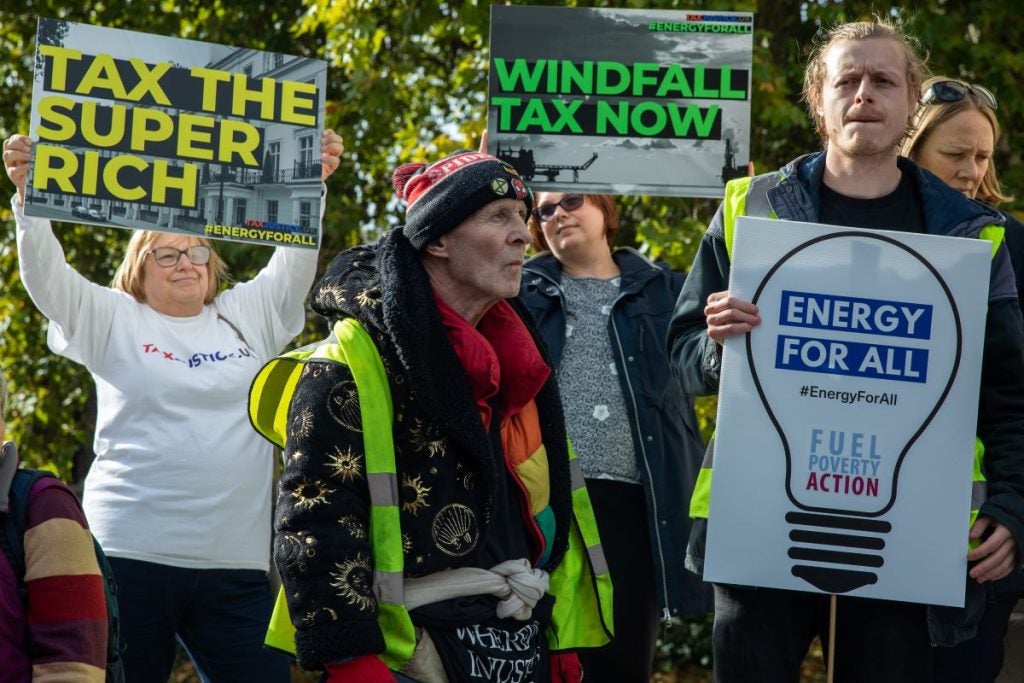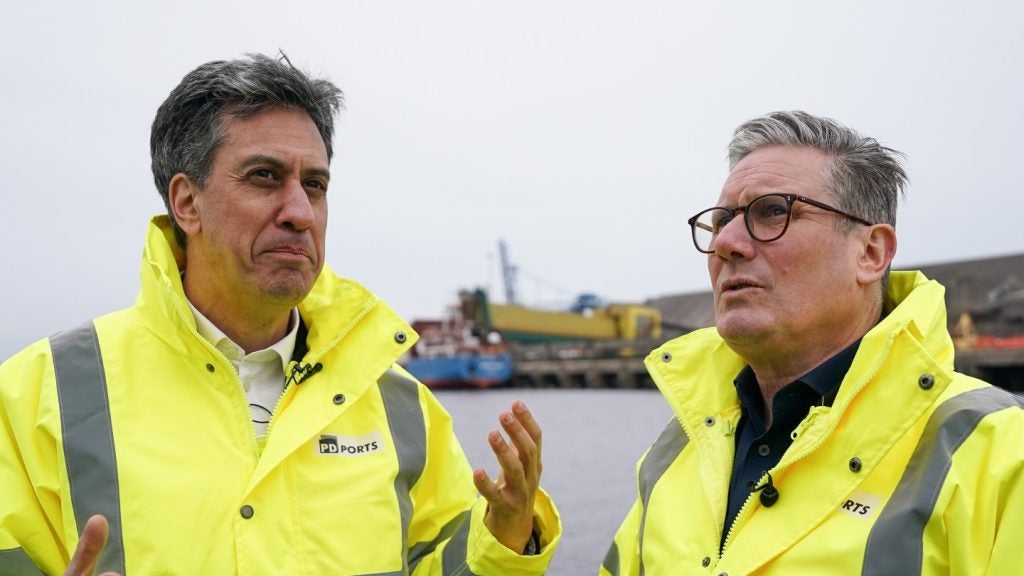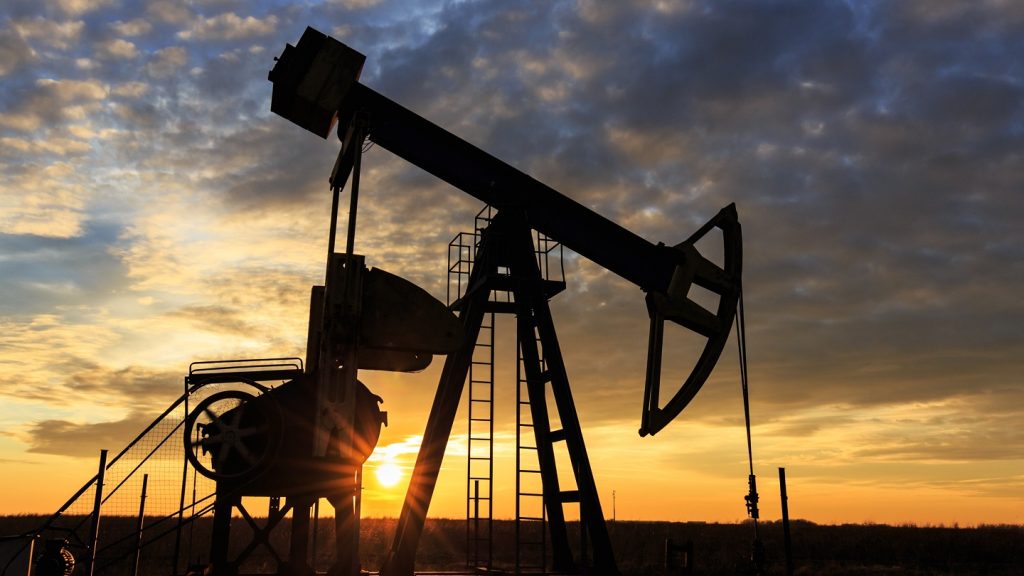Offshore Technology lists the top five terms tweeted on liquefied natural gas (LNG) in February 2022, based on data from GlobalData’s Oil and Gas Influencer Platform.
The top trends are the most mentioned terms or concepts among Twitter discussions of more than 150 LNG experts tracked by GlobalData’s Oil and Gas Influencer platform during February 2022.
1. Tankers – 208 mentions
Mitsui O.S.K. Lines, Ltd. (MOL) signing a deal for a newbuild ice-breaking tanker to promote Russia’s Arctic LNG 2 Project, and war speculations arising from stationing of Marshal Vasilevskiy tanker near Gazprom’s underground storage facility in Kaliningrad, were some of the popular discussions in February 2022.
Svetlana Modeva, a maritime news editor, shared an article on Japanese shipping company Mitsui O.S.K. Lines (MOL) entering a charter contract to support the transport of cargo for Russia’s Arctic LNG 2 Project in Gydan Peninsula. MOL’s subsidiary signed an agreement with the project company, whose largest shareholder is the Russian natural gas producer PAO NOVATEK, for a newbuilding ice-breaking tanker.
To be constructed at the Guangzhou Shipyard International Company’s facility, the vessel will be delivered by 2024, the article noted. It further detailed that the contract followed the signing of a 2020 charter of contracts for three ice-breaking LNG vessels for the same project. The new vessel will carry condensate from the LNG/condensate plant on the Gydan Peninsula in the Arctic Circle, primarily to Europe through the Northern Sea Route.
See Also:
MOL has been running three ice-breaking LNG carriers for the Yamal LNG Project on the Northern Sea Route since March 2018. Now, three ice-breaking LNG carriers for Russia’s Arctic LNG 2 Project are expected to enter service in 2023, the article highlighted.
How well do you really know your competitors?
Access the most comprehensive Company Profiles on the market, powered by GlobalData. Save hours of research. Gain competitive edge.

Thank you!
Your download email will arrive shortly
Not ready to buy yet? Download a free sample
We are confident about the unique quality of our Company Profiles. However, we want you to make the most beneficial decision for your business, so we offer a free sample that you can download by submitting the below form
By GlobalDataThe term was also discussed by David Sheppard, an energy editor, while retweeting about Marshal Vasilevskiy tanker, a floating storage and regasification unit (FSRU), found anchored offshore in the Baltic Sea, next to Gazprom’s underground storage facility in Kaliningrad, Russia. It was regarded as a rare move since the Kaliningrad terminal usually receives gas via pipelines. Stationing the vessel was speculated as a contingency plan by Russia to ensure gas supplies to the terminal are not impacted if it planned to invade Ukraine that could lead to sanctions by the west or possible disruptions to pipelines passing through Ukraine. Sheppard tweeted that it was interesting to watch contingency plans and how coincidental gas deliveries unfold in real time.
2. Pricing – 117 mentions
Record prices for LNG not being able to mask poor investments by Origin Energy, how LNG exporters needed price or demand signals and permits to expand to boost Europe’s energy security, and spot LNG prices being excessively expensive in Pakistan, were some of the popular discussions around LNG pricing during the month.
Bruce Robertson, an LNG analyst at the Institute for Energy Economics and Financial Analysis (IEEFA), tweeted on the energy firm Origin Energy’s announcement to write off losses from a $2.2bn sale of its 10% stake in Australia Pacific LNG (APLNG), a joint venture. The impairment was expected to be between $190m to $200m that would be taken in the first half of this financial year. Origin, however, confirmed that the charge would be covered with the release of $100m to $110m from its foreign currency translation reserve, the article noted. Origin sold a 10% stake in the APLNG venture to EIG, an institutional investor in the global energy sector, thereby reducing its stake to 27.5% and freeing up the funds to lean into clean energy transition efforts, such as hydrogen, battery storage, and customer-facing technology, in October 2021.
Robertson opined that not even record LNG prices could mask the poor investment for Origin. Frank Calabria, Origin chief executive, stated that APLNG had shipped three cargoes in the December quarter associated with a surge in spot LNG prices in Asia, and is expected to deliver five more. APLNG’s fourth quarter sales also jumped to $2.25bn in 2021, with investment banking company JP Morgan expecting strong LNG prices in the start of 2022 that would revise Origin’s revenues and earnings estimates upwards, the article noted. The energy company’s LNG selling price increased to $11.80 per million metric British thermal units (MMBtu) in the second quarter of fiscal 2022, including cargoes sold into the North Asian spot market where prices averaged to about $28/MMBtu. JP Morgan experts stated that the prices still lagged behind those of competitors such as Woodside and Santos.
The term was also discussed by Robin Mills, the CEO of Qamar Energy, an energy consulting and advisory services company, on how Europe can build its energy capacity and reduce its reliance on Russia’s gas. He tweeted that it should be a mandate to store gas and expand capacity. With the coldest months having passed, experts believe that the LNG imports in the summer may experience demand and storage constraints. Therefore, LNG exporters needed price or demand signals and permission to expand like in the US. For instance, much of Europe’s LNG import capacity is in Spain, but it is not well connected to the continent and, therefore, emergency relations with France could be raced up, the article noted.
According to Dmitri Medvedev, Russia’s former president and chairman of Gazprom, Europeans would soon have to pay $2,254 for 1,000 cubic metres of natural gas that is equal to twice the already increased prices, the article added.
In another tweet, Stephen Stapczynski, an energy and commodities reporter, discussed Pakistan’s raging LNG supply crisis. The article highlighted that LNG trading companies such as Eni and GUNVOR cancelled their LNG deliveries to Pakistan in the first and second weeks of March 2022, respectively. GUNVOR had also cancelled a delivery in November 2021. The crisis is further aggravated with highly expensive spot LNG prices. Just one LNG cargo from Qatar Gas Company is expected to be offloaded under a ten-year agreement at Pakistan’s LNG Terminal-2 in March.
3. Export – 95 mentions
US LNG exporter Cheniere Energy extending its long-term LNG supply deal with EOG Resources, the US Energy Information Administration (EIA) predicting a rise in energy prices across all sources in winter and not just LNG, and Egypt breaking LNG export records, were some of the popular discussions in February.
Clean Fuel (Offshore Energy), an offshore energy news platform, shared an article on the US LNG exporter Cheniere Energy extending its long-term LNG supply agreement, originally signed in 2019, with energy company EOG Resources, thereby tripling the volume of supply. The transaction is expected to end the commercialisation of Cheniere’s Corpus Christi Stage III project. According to the amended terms of the agreement, EOG will sell 420,000 million metric British thermal unit (MMBtu) of natural gas a day to CCL Stage III for 15 years, the article detailed. Additionally, as per the previous agreement, EOG will sell 300,000MMBtu a day to CCL Stage III, totalling 720,000MMBtu in the 15-year period.
The term was also discussed in a tweet shared by the Centre for LNG, which promotes the use of LNG at home and abroad, on how LNG exports provided stability to the US natural gas market and benefit manufacturers, improved labour income, promoted job growth, and increased household purchasing power. The article highlighted that energy prices across sources would rise in winter, and not just for LNG. The Covid-19 pandemic and its impact on supply chains in 2020 and 2021 played a key role in the rise in energy prices and of other commodities in the US, the article noted.
Charlie Riedl, the Centre for LNG executive director, however, pointed at exports not being a key driver for elevated prices in the winter in the US, with year-over-year growth of LNG exports being only 1.7 billion cubic feet per day (Bcf/d). Therefore, a total daily demand for natural gas this winter grew only about 1Bcf/d on an average compared to last winter, which is less than 1% growth. US LNG exports have played a key role in stabilising the market by promoting production across the country, while simultaneously playing a critical role in achieving Conference of the Parties (COP26) climate goals and keeping carbon emissions below 2019’s record highs, the article highlighted.
In another tweet, Charles Ellinas, the CEO of EC Cyprus Natural Hydrocarbons Company, (eCNHC), a consultancy and advisory services company, shared an article on Egypt breaking its LNG export records and targeting Europe, while at the same time trying to become a regional hub and a key player in the market. The country reported a ten-year high in LNG sales after an increase in global prices and the restart of production in its second LNG facility, the Damietta plant, at the end of February 2022, the article detailed.
Gaslog Glasgow, an LNG tanker with a capacity of 174,000 cubic meters, set sail from Egypt to the Gate Terminal in Rotterdam, the Netherlands’ only LNG import facility. It is Egypt’s first shipment to the Netherlands, which also acts as a hub for LNG supply in northwest Europe, the article noted. LNG exports from Egypt picked pace in 2018, after discovering new major gas fields, undertaking reforms in the energy sector, paying most of the accumulated dues to foreign partners, and increased foreign direct investments in the sector, the article highlighted.
4. Imports – 59 mentions
Early sings of India’s demand for coal and LNG struggling, natural gas imports including both pipeline and LNG accounting for more than 80% of Europe’s and UK’s natural gas needs, and the US trying to build an LNG supply line amid rising gas prices, were some of the popular discussions during the month.
Clyde Russell, an Asia commodities columnist, shared an article on India’s demand for coal and liquefied natural gas (LNG) is being affected due to high prices, although demand for crude oil remained strong in recent months. The country’s LNG imports trended low, with January 2022 arrivals amounting to just 1.73 million tonnes compared to 1.91 million in December and 1.85 million in January 2021, the article highlighted.
India is expected to be more price sensitive than other commodity buyers in Asia, the world’s top importing region, the article noted. The country also expects to buy the super-chilled fuel on short-term cargoes or on a spot basis, and was therefore impacted by the rise in prices late in 2021. Natural gas in India is used for industrial applications and back-up power generation, but experts believe that the current spot prices will be uneconomical for consumers.
Sergio Chapa, an energy reporter, tweeted an article on the European Union (EU) importing 80% of its natural gas supply needs. The article further detailed that natural gas imports via pipeline made up 74% of all the imports, while LNG accounted for the remaining 26%. In addition, most of the region remained dependent on natural gas imports from countries such as Norway, Russia, Azerbaijan, and North Africa.
The article further highlighted that LNG provided about 20% of all the natural gas supplied to the EU-27 countries and the UK in 2020 despite LNG imports accounting for 26% of the total natural gas imports. In addition, even though most of the LNG supplied to Europe is through long-term contracts, increasing volumes of LNG supplies, especially from the US, contributed to the significant increases in LNG imports to Europe between 2019 and 2021.
In another tweet, Steve Everley, an energy advisor, tweeted that in the 2000s, the US was advised to increase LNG imports, as most experts cited high gas prices in the foreseeable future. The article noted that the US is running out of gas, with past, unbalanced energy legislations leaving Americans vulnerable to interrupted natural gas supplies, thereby leading to skyrocketing prices. It also detailed how the country’s dependence on foreign sources has increased to more than 53% currently, compared with 35% in 1973.
Experts believe that it is time the US brings more expensive LNG from countries like Russia, Africa, the Middle East, and the Caribbean. The article further highlighted that the US had tried to build an LNG supply line earlier but abandoned it. However, the shortage has triggered a need to reverse course, with the Cove Point terminal to be expanded and re-opened soon, and plants in other states having already opened.
5. Cargo – 35 mentions
Japan delivering LNG cargoes to Europe in February and March 2022, and the Maran Gas-owned LNG carrier Yiannis having arrived at Louisiana’s new Calcasieu Pass export facility to take the first export cargo, were some of the popular discussions in February.
Stephen Stapczynski shared an article on Japan confirming to cooperate on sending LNG supplies to Europe, with cargoes already being shipped as part of their February and March deliveries. However, Stapczynski tweeted that those shipments were earlier sold by Japan only due to attractive prices rather than on government request.
Koichi Hagiuda, Minister of Economy, Trade and Industry, declared that Japan will provide Europe with a part of LNG, the article detailed. A government request led a Japanese company to deliver many LNG-laden vessels to Europe in March 2022. The ships have an LNG capacity of 70,000 tonnes each, accounting for several hundreds of thousands of tonnes to be supplied to Europe.
Speculations about rising tensions between Russia and Ukraine gradually led to a severe shortage of natural gas in Europe, which receives about eight million tonnes of gas a month from Russia’s state-owned energy company Gazprom and relies on Russia for 40% of its natural gas imports. While the US and Europe planned to impose sanctions on Russia, the US had already consulted with Japan about LNG cargoes to be sent to Europe, the article highlighted.
Europe’s tight supply and demand owing to snow and cold waves prompted the Japanese government to provide the region with LNG supplies, as long as it did not trigger a domestic energy supply shortage, the article further detailed.
In another tweet, Clean Fuel (Offshore Energy) shared an article on the LNG ship management company Maran Gas’s carrier Yiannis having arrived at Louisiana’s new Calcasieu Pass export facility to carry the first export cargo. The Calcasieu Pass LNG facility was expected to start operations in the first quarter of 2023, but began production as early as on 3 February 2022, the article noted.
The LNG carrier was built by the South Korean shipbuilding company Daewoo Shipbuilding & Marine Engineering (DSME) and was delivered to Maran Gas in September 2021. The Calcasieu Pass LNG facility, meanwhile, is expected to export ten million tonnes per year (Mtpa) of LNG, the article detailed.






Related Company Profiles
Qamar Energy (Inactive)
Mitsui & Co Ltd
Gunvor SA
Mol Plc
Cheniere Energy Inc